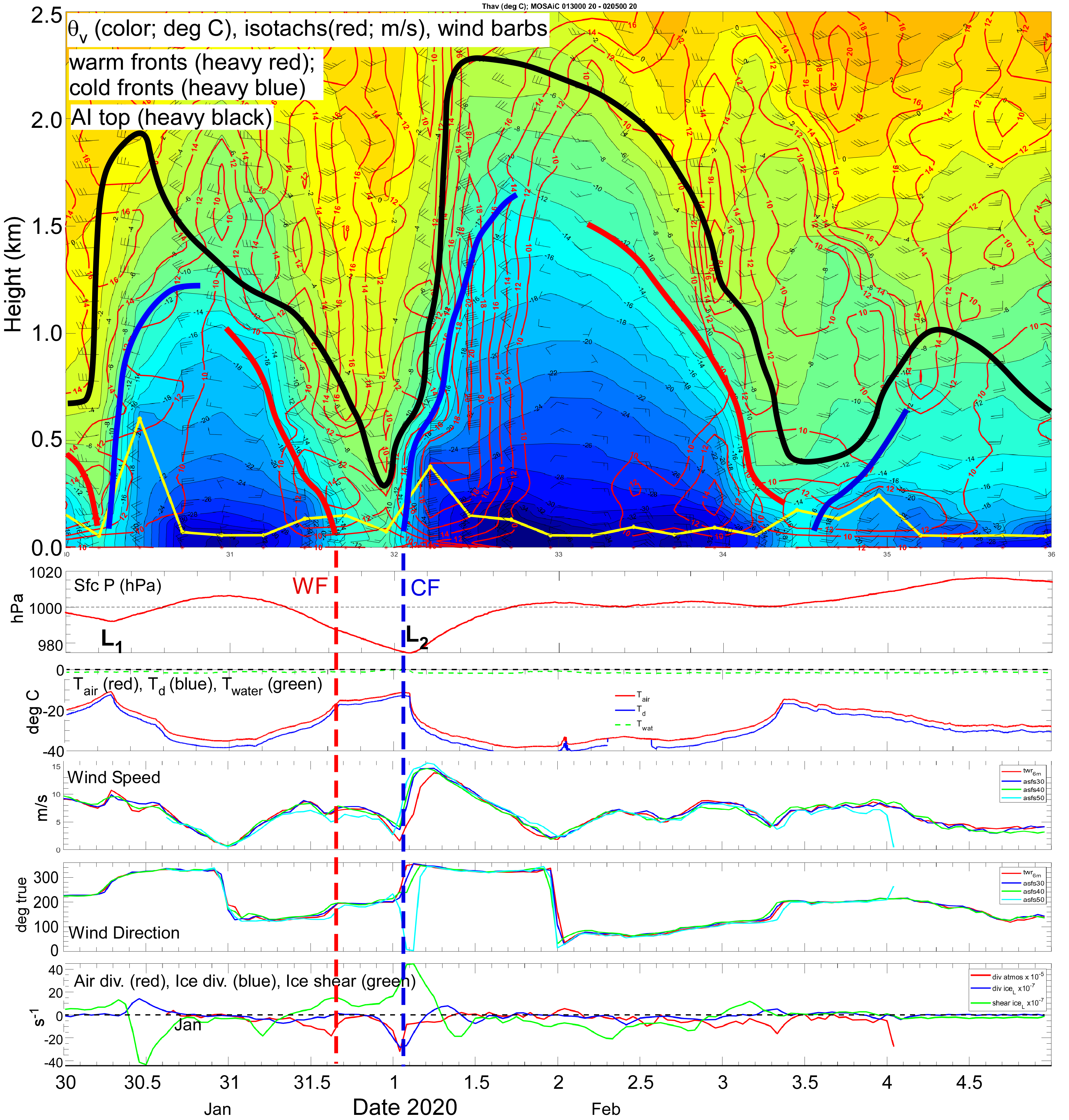Air-ice-ocean interactions at MOSAiC: A storm case study (Jan 30 - Feb 3, 2020)
Authors
Ola Persson — CIRES, University of Colorado and NOAA PSL *
Jennifer Katy Hutchings — Oregon State University
Amy Solomon — University of Colorado/NOAA- Earth System Research Laboratory
Category
ARM field campaigns – Results from recent ARM field campaigns
Description

Multidisciplinary studies of ice dynamics events during the MOSAiC field program have been underway during the past year, and this presentation will illustrate the air-ice-ocean interactions during one such ice dynamics event occurring in conjunction with an atmospheric cyclone. The primary forcing of sea ice motion is atmospheric surface stress, together with the ocean stress and internal ice stress. During the atmospheric cyclone on Jan 30 - Feb 3, 2020, at MOSAiC, large changes in wind speed and direction occur in conjunction with associated large atmospheric pressure gradients and frontal passages, resulting in large changes in the surface stress vector. Because ice motion is highly correlated with and strongly driven by the atmospheric winds, these large changes in wind speed and direction produce significant accelerations (changes) in ice motion, with the differential accelerations causing convergence/divergence and shearing of the ice. Furthermore, through the stress transfer between the ice and upper ocean, the changing ice motion introduces an inertial response in the ocean mixed-layer currents. In general, the atmosphere-ice and ice-ocean relationships have the expected temporal delay and directional turning angles, though these vary during the most rapidly changing periods of this transitory event. Furthermore, the timing of the ice acceleration is not always consistent with the timing of the atmospheric forcing, suggesting that internal ice stress from a distance may also impact the observed ice acceleration.
The observations suggest that mesoscale atmospheric features, such as the two observed low-level jets, play a key role in determining the ice accelerations, while simulations with a limited area coupled air-ice-ocean model suggest that the passage of the cyclone produces coherent synoptic-scale circulation patterns in the lower atmosphere, the sea ice, and the upper ocean. The observations are consistent with the passage of these circulation patterns, though they do not provide sufficient spatial coverage to show the patterns demonstrated by the model. To the authors’ knowledge, this is the first time that complete observations of all three media have been made in the same area with the necessary temporal resolution to observe these interactions and to show these coherent circulation patterns.
Lead PI
Ola Persson — CIRES, University of Colorado and NOAA PSL

